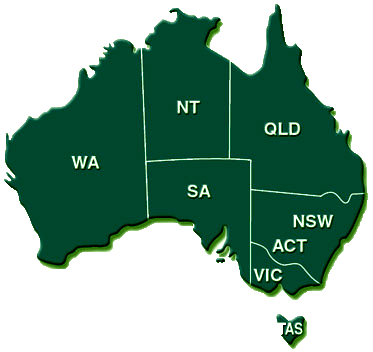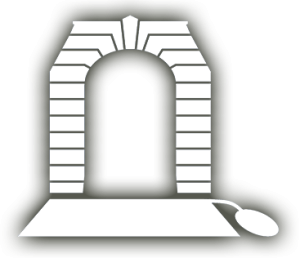Given at Goodna Brisbane 18 August 2019.
Veterans, Ladies and Gentlemen, All
A special thank you and welcome to that dwindling band of warriors and spear carriers who fought in the Vietnam War.
It is a truism that the Gallipoli Campaign of the WW1 was central to defining Australia as a nation which stood ready to stand with allies on the battlefields across the globe. As this is so, the Vietnam War and the Battle of Long Tan on the 18th August 1966 defined those men and women who fought in South Vietnam during the period of 1962 to 1974.
Please forgive me a moment to tell a personal ‘war story’ as a lead into my understanding of the Battle of Long Tan and of the men who fought there.
I was called up in July 1965, in what was referred to as the First Intake of National Servicemen. I arrived in South Vietnam in early May 1966 as, Regimental Number 3786861 Private K. D. Ryan Sir! I was a Rifleman in Nine (9) Section, 12 Platoon D Company 5 RAR. On 24th May 1966 D Company along with the rest of the Battalion was inserted by helicopter into the area known as Nui Dat, it was to become our base and a familiar geographic location all too quickly.
This insertion was code named Operation Hardihood and was to last two weeks as we, and then 6 RAR, cleared the area of enemy in ever increasing circles. It was monsoonal as few of us had ever experienced, humidity, clay soil, rubber plantations, jungle, constant picquets, four hours sleep a night, constant movement, enemy sightings, enemy contacts, mosquitoes, strange noises at night, rotting clothing and swift running creeks and rivers. Very different from the training areas we had experienced just a short time ago. Those first two to three weeks were a test for us and sign of what the future was be.
Fast forward to 18 August. D Coy 5 RAR returned to Nui Dat base from a two-week operation. This involved securing and a cordon and search of Binh Ba, a Catholic village of 5,000 people to the north of Nui Dat. This village was to be the scene of a major battle three years later.
As we were cleaning up and getting ready to attend a concert where Little Patti, all of 17 years of age, and Col Joy and the Joy Boys were performing, a battery of gun opened. Nothing strange! Then another battery began firing, then another and finally the American 155mm gun battery opened fire. A different sound and with this we knew that something serious was happening.
You would have to read the chronology of times and events to fully understand the chaotic nature of what transpired between 3.15pm when D Coy 6 RAR, comprising 108 men, entered the Long Tan Rubber and 7.10pm when relief in the form of A Coy 6 RAR and APCs arrived. In that time:
- D Coy fought an estimated 2,000 enemy.
- Fought in torrential rain against constant human wave assaults from different directions of 100 to 200 NVA troops at a time.
- Many of the men ran out of ammunition.
- Platoons became separated from each other and from Company headquarters.
- Radio communications was lost at times as some radios were hit by gun fire.
- Individual soldiers became separated in the melee as leaders tried to keep their men together as they sought to move back toward company headquarters while under constant attack.
- Some wounded had to crawl back to where they thought the main body had moved to in the dark and torrential rain. Some had to play dead at times due to the proximity of the enemy.
- The RAAF helicopter pilots, and crew flew in ammunition in conditions unlike any they had ever experienced. Flying low they dropped the ammunition after identifying smoke was sighted.
- When the helicopters were in the air the guns had to stop firing for fear of knocking them out of the game.
- Men on the Gun Line back at Nui Dat collapsed from exhaustion and from the toxic fumes which could not be dissipated because of the lack of wind.
- In all a total of 24 artillery guns were to fire over 3,000 rounds into the Long Tan rubber to save D Company 6 RAR.
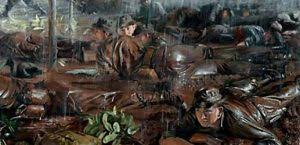
At 7.10pm the enemy began to disperse. D Coy 6 RAR regrouped slowly and along with those arriving from Nui Dat moved to a clearing just outside the rubber. Evacuation of the dead and wounded began with both Australian and American helicopters operating through the night.
But many men could not be accounted for – they were still in the rubber plantation!
At that point the Battle of Long Tan was thought to have been a disaster – a defeat.
105 Australians and three (3) New Zealanders entered the Long Tan Rubber at 3.15pm that day. 17 were KIA and 24 WIA. One member of 3 Troop I APC Squadron died of wounds some days later.
No one knew the extent of the enemy casualties.
While all of this was going on D Coy 5 RAR had been warned to move at first light on 19 August to fly to that same clearing.
To clear the battlefield D Coy 5 RAR and D Coy 6 RAR and elements of A Coy 6 RAR did a sweep through the Long Tan rubber plantation, on foot and in APCs. The primary task was to locate the missing Australians. This sweep began at 8.45am.
It slowly became evident that a major defeat had been inflicted on the enemy. The official enemy dead was put at 245 KIA. It is known that there were many more who died but the enemy carried them away to be buried elsewhere.
At 10.45am, as one writer commented, elements of D Coy 6 RAR “come across the final 11 Platoon position and discovered the remaining 13 missing, all dead, still in the firing positions with their fingers still on the triggers of their weapons, facing outwards towards the enemy. The rain has washed them clean and they all still seemed to be alive”.
D Coy 5 RAR moved through the rubber and slowly followed up the enemy for some days after that.
Having been a bit player in such an event I am often at a loss to describe it, to put into words the actions of the men of D Coy 6 RAR.
Truly, legends are made by brave and decent men.
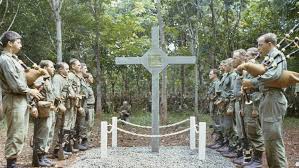
To find these words I turn to that other defining event in Australian history – the Kokoda Campaign of WW2.
Between 26 – 31 August 1942 the Battle of Isurava took place along the Kokoda Track. It was a decisive battle as we fought to halt the Japanese advance toward Port Moresby. 99 Australians were killed and 111 wounded.
If you stand at the ISURAVA Memorial and look to the north, up the valley, with the ridge lines to the West and the East, with the EORA Creek, down below and to the East you can visualise where the Japanese came from.
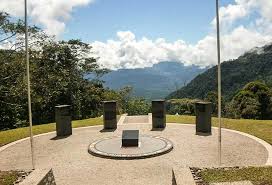
The lessons I speak of are there to your front on four pillars that read:
COURAGE
ENDURANCE
MATESHIP
SACRIFICE
They are qualities that I see in the men of D Coy 6 RAR as they fought a decisive battle against an enemy determined to cause a humiliating defeat on the Australians.
Yes, war is terrible, and it invariably solves nothing. Out of it though we as a nation has gained, yet again, an example and qualities to live by:
COURAGE – to venture beyond the norm
ENDURANCE – to remain focused on the end game.
MATESHIP – to tolerate and to respect those around us.
SACRIFICE – to accept disadvantage and discomfort.
To these qualities I would add – RESILENCE – these men stayed the course.

The Battle of Long Tan remains a defining event in our national story.“

